Total Retail’s Game Changers 2017
Total Retail Staff
October 9, 2017
Total Retail's third annual profile of entrepreneurs and companies disrupting the retail industry.
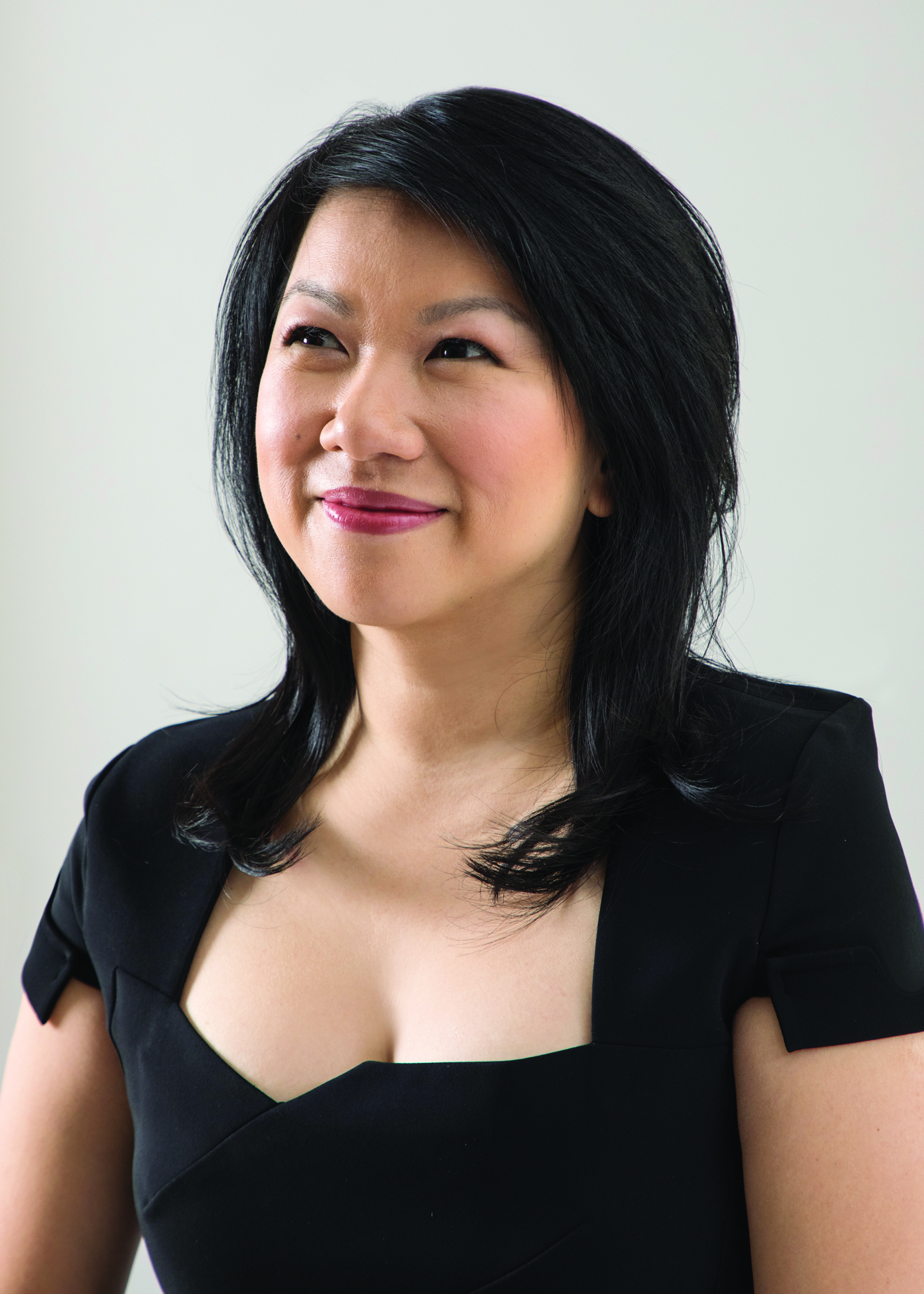
Shan-Lyn Ma
Founder and CEO, Zola
Where did you get the inspiration to launch your company?
I always wanted to be an entrepreneur. In 2013, after working at Yahoo and then at Gilt Groupe, I felt like it was my time. It also happened to be the same year that I was going to a lot of weddings. Everyone has that year in his or her life, right? That year when nearly every weekend is spent at a friend’s wedding. So I was buying a lot of wedding presents off of my friends’ registries at big department stores, and I saw firsthand how terrible the shopping experiences were. They were impersonal, fragmented and not mobile-friendly. I met with my former co-worker and friend, Nobu Nakaguchi, who completely agreed, remembering how bad the registry experience was when he got married years before. We realized that with our backgrounds in design, technology and e-commerce, we were well positioned to reinvent the antiquated wedding registry business. And today, Zola is the fastest-growing wedding company in the country.
What was the "aha!" moment when you realized you might have a successful business?
Nobu and I spent day after day building our prototype, testing it with hundreds of engaged and newlywed couples, going back to the drawing board given their feedback, and testing again. During one of my sessions, a bride started crying in front of me. When I asked her why, she said that she didn’t know that she was “allowed” to register for the things we were offering. Her emotional reaction definitely was an “aha!” moment for us. Plus, a lot of our friends who were getting married saw our prototype and were practically begging us to launch, too.
What was the pivitol marketing campaign or channel that really catapulted the business in its early days?
In the early days of Zola, both Nobu and I really relied on our personal networks. Many of our early adopters were through our friend groups. They were all incredibly supportive, and (thankfully) many of them were getting married. We also targeted graduate schools because we knew that grad students were often early tech adopters, around marrying age (or attending a lot of weddings), and could be prospective job candidates for the future.
How are you planning to scale your business for future growth?
For three years we stayed heads-down focused on creating the best registry experience for couples and guests. However, the whole time our couples were asking us, “What’s next?” The No. 1 request that we heard over and over again was to offer wedding website designs as personal, beautiful and intuitive as our registry.
In 2016, Nobu and I decided we were ready to scale and take on the $300 billion global wedding industry. We launched Zola Weddings earlier this year, an entirely free suite of wedding planning tools including wedding websites, a customizable checklist, guest list manager and, of course, registry. Before this launch, we were meeting couples about seven months before their wedding. Now, we’re able to serve couples from the day they get engaged through their first year of marriage and even after. Since we’re the only wedding company monetizing through e-commerce, we’re the only wedding company able to provide all of these planning tools to our couples in one place, all for free.
Can you tell us about a successful initiative for Zola that was launched in the last year?
Zola Weddings was an incredible initiative and successful launch that took every member of our team to accomplish.
What are your goals for the business going forward?
Our long-term goal is to create the best wedding planning and registry experience for our couples and their guests. We’re on track to have a phenomenal 2017.
Can you tell us about a successful initiative for Zola that was launched in the last year?
We offer our couples and guests an amazing experience, from merchandise selection to best-in-class customer service. We also have an incredible in-house tech team, so we don’t often outsource projects. Right now, we’re very focused on brand awareness to ensure that couples and guests know about Zola in the first place. We’re always thinking about how to convert customers once they land on Zola.
Tell us about your hiring strategy.
In addition to attracting top talent, we have a strict “No Asshole” policy at Zola. To that end, we make sure every candidate is the right culture fit. You sit next to your co-workers every day, so a great attitude is just as valuable to us as a fantastic work ethic.
Tell us about your leadership style.
One of the best pieces of advice I’ve ever received came from my co-founder and Zola’s chairman, Kevin Ryan. He said that as a CEO, “your job is to become irrelevant.” If you’re able to hire the right people to do the things you always felt like you were doing alone, you’ve built something bigger than yourself — an enduring company. I try to bring a hands-off approach to my team, letting them explore, discover and shape their skills. I want every person that works at Zola to be excited to learn, and my dream is for every person that moves on to feel confident enough to be able to start his or her own company one day. But of course, I never want them to move on from Zola!
Tell us about your leadership style.
We’re always testing at Zola and adapting our product to the needs of the market. We also conduct surveys with both users and nonusers to learn how we can improve. For example, in the early days, I had a hypothesis that modern couples no longer wanted traditional gifts as much as they wanted cool experiences to share with each other. I was only partially right — couples actually want it all. They want the experiences, but they also want classic home upgrades, like kitchen appliances and soft sheets, and they want money to build a life together. So we quickly expanded our product offering, and now sell over 50,000 gifts from over 500 brands. Traditional retailers tend to have a hard time adapting quickly, but it’s important to listen and be nimble.
What technology systems and service providers are in your technology stack?
Two great systems we’re currently using are React and Angular.
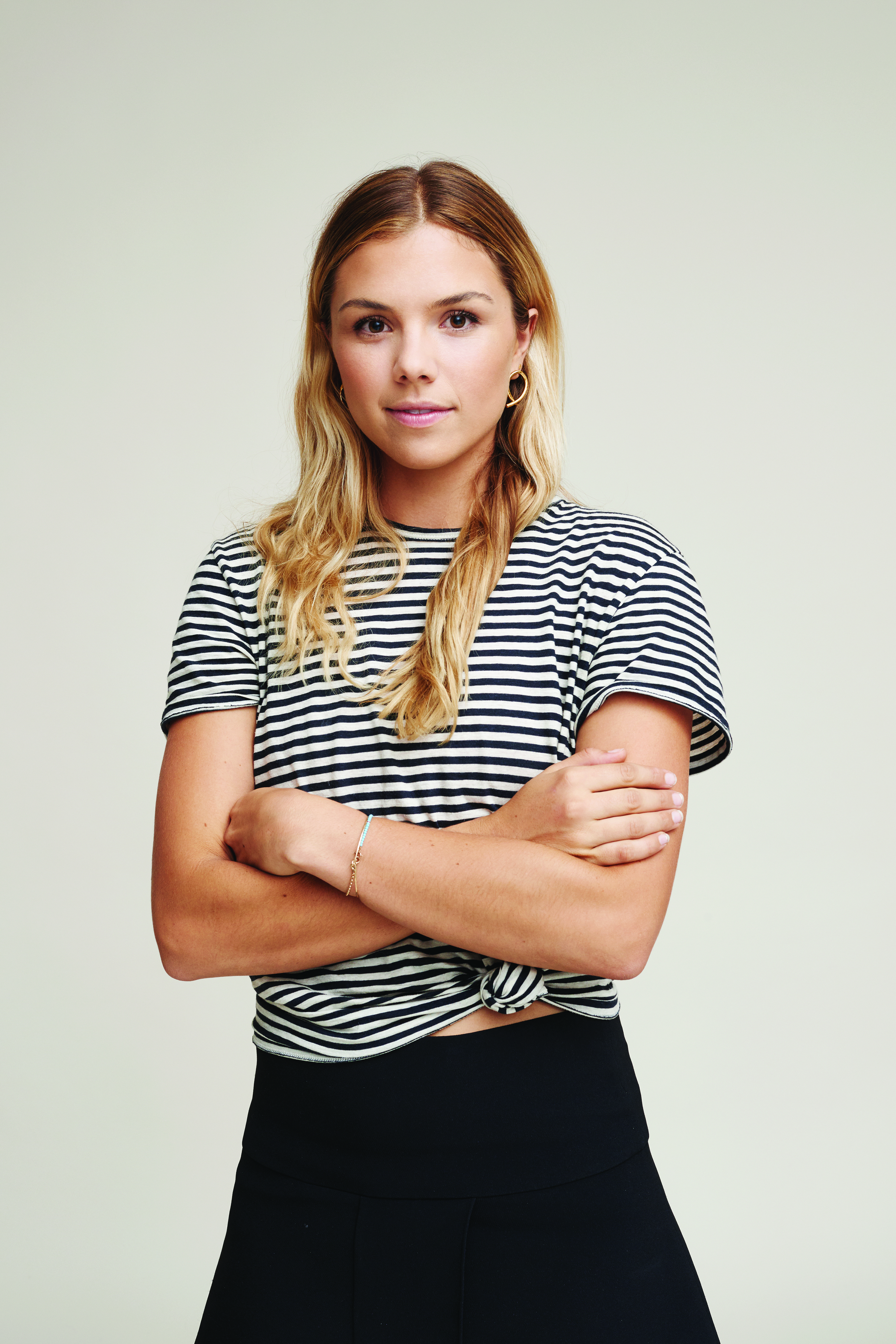
Tyler Haney
Founder and CEO, Outdoor Voices
Where did you get the inspiration to launch your company?
I started Outdoor Voices (OV) because I wanted to build an activewear brand that approached recreation and activity differently. At the time, everything else in the activewear space was shiny black or neon and emphasized the mantra “harder, faster, stronger,” which didn’t at all align with how I was being active in my own life. Our mission is to celebrate daily activity, and create products that are as functional for a dog walk as they are for running a marathon.
What was the "aha!" moment when you realized you might have a successful business?
The response to our first collaboration with Leandra Medine of the Man Repeller was an early indicator we were on the right track. Leandra is someone who is active, but not defined by it and doesn’t take herself too seriously. I was really proud of the way that collaboration turned out, and it became a positive rallying moment for our customers. After Lena Dunham wore it on an episode of “Girls” in an empowering (and hilarious) running scene, I started seeing more and more people wearing OV around New York City.
What was the pivitol marketing campaign or channel that really catapulted the business in its early days?
We’re constantly looking to engage with our community in real life, and social media enables us to not only connect with people online, but offline as well. Instagram has proved an invaluable way to encourage friends of the brand to come together for activities like jogs and yoga at our stores.
How are you planning to scale your business for future growth?
We’re focused on building our business digitally, first and foremost, but are starting to amplify the awareness we have online with physical touchpoints in areas of recreation. We’re opening stores across the country, and using them as hubs to bring people together around activity.
Can you tell us about a successful initiative that was launched in the last year?
We launched a digital tool to shop OV Kits, which are complete uniforms for recreation. The online Kit Shop had a positive response from both long-time customers and first-time shoppers. We’ve always developed our product in the form of outfits, and it’s how we saw many of our customers already shopping. OV Kits are a reflection of that, with a bundled price to make the checkout process as seamless as possible. We want people to spend less time shopping and more time doing things.
What are your goals for the business going forward?
We’re building the next great activewear company. In the meantime, we’re moving west, expanding our retail presence to Aspen, Colo., Los Angeles and San Francisco. And we have a bunch of super exciting partnerships happening later this year.
Can you tell us about a successful initiative for Zola that was launched in the last year?
We offer our couples and guests an amazing experience, from merchandise selection to best-in-class customer service. We also have an incredible in-house tech team, so we don’t often outsource projects. Right now, we’re very focused on brand awareness to ensure that couples and guests know about Zola in the first place. We’re always thinking about how to convert customers once they land on Zola.
Tell us about your hiring strategy.
Early on, we hired more for breadth of capability, then, as we grew, we started hiring for depth of capability. Now that we have a great foundation, we bring people onto the team with specific experience.
Tell us about your leadership style.
Be human, approachable and inclusive — in leadership and as a brand. It makes a difference and people do their best work when they feel comfortable around you. Spinning off of that, it’s important to invite people into your problems. When something goes wrong, bounce it back to the team with a question about how to fix it. Never waste a crisis; crisis = opportunity.
What technology systems and service providers are in your technology stack?
We use Slack for most internal communication. It’s a great way to connect teams working remotely and share important information, while keeping things transparent and readily available to everyone.
What can traditional retailers learn from your business?
People gravitate towards brands that they can relate to. We have a strong personality and work hard to constantly engage with our community. Until recently, I think that connection has been lacking in retail.

David Yeom
Co-Founder and CEO, Hollar
Where did you get the inspiration to launch your company?
The early inspiration for Hollar is rooted in my childhood. I grew up from very modest beginnings and the dollar store was one of my favorite places to go with my family. We could really stretch our budget there. Now fast-forward to my professional career, where I’ve worked at several amazing e-commerce companies, including eBay and The Honest Company, where I met Brian Lee, who co-founded The Honest Company. One afternoon, Brian and I were having lunch and randomly talked about our mutual love of dollar retail and thought, “we should create one that’s online and accessible to everyone!”
What was the "aha!" moment when you realized you might have a successful business?
When we hit capacity and outgrew our warehouse after just five months. We had more than 20,000 orders in the backlog at one point and finally moved into a warehouse that was 10 times bigger than our first warehouse. It used to be the former facility for the 99 Cents Only Store.
What was the pivitol marketing campaign or channel that really catapulted the business in its early days?
Word-of-mouth and social media were key to growing brand awareness and reaching our core customer — millennial moms. It was exciting to see our customers start to post their own Hollar hauls and unboxings. I still read the comments on our Facebook page every day.
How are you planning to scale your business for future growth?
There are several initiatives we’ve been working on that will enable us to scale quickly. We launched national TV ads earlier this year that are getting the Hollar name in millions of households. We’re also establishing relationships with brands, namely global CPG companies, to source directly from them. Furthermore, we’re building a marketplace platform that enables vetted third-party merchants to sell on Hollar, allowing us to significantly grow the product offering as well as go international.
Can you tell us about a successful initiative for Hollar that was launched in the last year?
We introduced a private-label home line, Just the Nest, only a year after launching the business, and we’ve seen it resonate with our customers, particularly the storage boxes and acrylic beauty organizers. Everything is chic, premium and comparable to what you would find at a Target or on Amazon.com, except at a lower price. The entire line includes closet organizers, storage boxes, office accessories, bath mats and stationery.
.
What are your goals for the business for the remainder of 2017?
Grow our product offering across all categories, including expansion into consumables, as well as through the launch of our marketplace platform. Both will give us the ability to sign on a variety of new merchants to ensure that we’re always supplying the best inventory at a significant savings to our customers.
Tell us about your hiring strategy.
We look for smart, passionate team players that thrive in a fast-paced startup environment. In addition, Hollar has a strong company culture, so it’s important that candidates know how to have fun, too.
Tell us about your leadership style.
Lead by example, empower others and treat others how you want to be treated.
What can traditional retailers learn from your business?
Value and convenience have never been more important than they are today. The post-recession mentality is still fresh, and it’s never been easier to research which retailer has the best price on a particular item. But that isn’t enough. Convenience is just as important, and the expectation of convenience has changed as a result of mobile. Retailers need to be omnichannel and where their customers are, and that’s everywhere, anytime.
What technology systems and service providers are in your technology stack?
Automation and enhancement within fulfillment. There’s been a ton of innovation in the area of warehousing, picking and packing via augmented reality and artificial intelligence, which will play a big part in our ability to delight our customers.
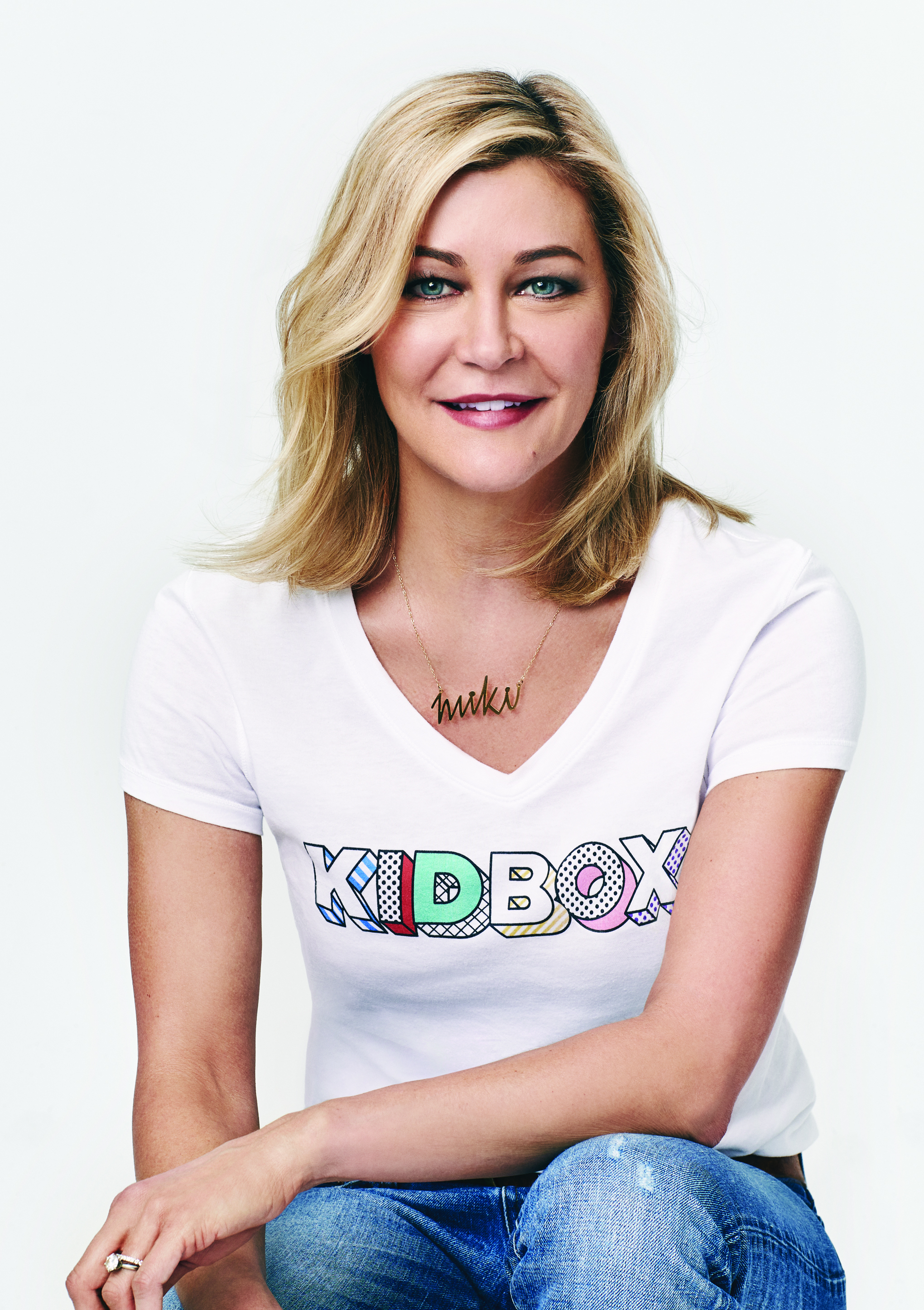
Miki Racine Berardelli
CEO, Kidbox
What was the inspiration for the launch of KIDBOX??
Haim Dabah, our founder and chairman, launched the company in the fall of 2015 after being an early investor in Trunk Club through Greycroft Partners. He believed that the curated, push commerce model was going to take hold as a preferred way of shopping and that creating the concept in the children’s apparel space was even more relevant than menswear or womenswear due to the rapid growth of children and the fact that parents are busier than ever and time-starved.
Haim created KIDBOX as the first kid’s style box offering premier brands, significant savings, with a social mission at its core. He was laser-focused on building a company with a social mission at its core. Haim saw firsthand the impact of providing new clothing to children in need after serving on the board of directors of Delivering Good for more than a decade.
What was the "aha!" moment when you realized you might have a successful business?
I’m a busy working mom of two boys, so I believed in the concept right away. My hunch was validated after shopping KIDBOX for my children and witnessing their anticipation and excitement, and then their joy after receiving the box, addressed to them and personally styled uniquely for them. Unfortunately, we’re seeing a lot of retail doors closing. At KIDBOX, we believe the new retail “door” is the front door of every household across the country. We’re bringing the shopping experience into the living room, the new Main Street store. It’s amazing to have so many brands approaching us to be part of our box because they see us as a new and exciting distribution channel and a vehicle that literally brings their brand over the threshold and into a customer’s home.
What was the pivitol marketing campaign or channel that really catapulted the business in its early days?
Our customer is actively engaged in social media, which is a natural extension to our business model. We’ve been extremely encouraged and amazed by the “earned media” we’ve garnered through Facebook. The KIDBOX unpacking experience lends itself to social media with mini fashion shows taking place in our customers’ homes, and parents snapping photos and posting on Facebook, Instagram and Pinterest. This creates a word-of-mouth phenomenon that continues to propel our growth and has since the beginning. We’re also excited about the “unboxing” trend that’s taking place on YouTube, where both influencers and everyday people are sharing their box experiences, spreading the word to others and driving awareness.
How are you planning to scale your business for future growth?
First and foremost, we’ve assembled a seasoned executive team with a track record of scaling digitally native businesses. We see this as a key differentiator in the landscape. In order to keep up with the demand of our business, we also recently moved to a new third-party logistics provider, TradeGlobal. We’re now in a much better position to grow the business through TradeGlobal’s extensive logistics network, automation, and flexible operations model to meet our customers’ high expectations for fast and seamless shipping and returns processing. Now that we’re poised for significant growth operationally, we’re adding new marketing channels to our portfolio and setting our sights on adding new categories, services and brand partners to the mix. Our objective is to deliver a consistenly exceptional customer experience, always upping our game to drive growth.
Can you tell us about a successful initiative for Zola that was launched in the last year?
We launched Baby by KIDBOX in the spring of 2017, and now offer the widest breadth of sizes in the children’s apparel box marketplace. By adding sizes newborn-24 months to our already existing sizes 2 to 14, we’re reaching more consumers and acquiring new customers through our gifting business. Furthermore, we’re adding new premier brands to our portfolio. We’re very pleased with the results thus far. We’re also proud to announce the creation of a kid’s board of directors. We want children to help us shape the company and create a movement of kids helping others and doing good in the world,
What are your goals for the business going forward?
Sales growth; building a high-performance, best-in-class team and an amazing company culture. We’re a startup and want to preserve the passion and fast-paced environment that startups possess, but we want to drive the business through a thoughtful strategic plan, marked by key performance indicators and measurable results. We also know that we will win by the content of the box itself, so we’ll continue to add new brands to our mix to accelerate growth.
What types of retail technology are you watching closely and/or thinking of implementing at KIDBOX?
KIDBOX is a technology company with proprietary algorithmic and data science practices that allow us to provide a predictive and personally curated box of style. We continue to evolve our mobile app and believe that it should serve as the customer’s “remote control” for their KIDBOX shopping experience.
We love what’s happening with chatbots and are watching the conversational commerce landscape closely. We will be adding technology to our customer service tool kit to enhance the customer experience and build even stronger connections with our customers. I believe that technology — especially retail technology — should enable customer and brand interactions, not just exist as technology for technology’s sake. If digital innovations aren’t working to grow the business, create measurable results and delight the customer, then they’re not worth the investment.
Tell us about your hiring strategy.
In addition to attracting top talent, we have a strict “No Asshole” policy at Zola. To that end, we make sure every candidate is the right culture fit. You sit next to your co-workers every day, so a great attitude is just as valuable to us as a fantastic work ethic.
Tell us about your leadership style.
If there’s one quality I hope to exude is to be approachable. My door is open a lot more than it’s closed, and I’m the happiest when sitting with the team, working side by side. I also don’t believe that organizational charts exist to depict how communication flows. They exist to let people know whom they should go to when they need an obstacle moved out of their way or a decision to be made. Every one of my direct reports know that I will consistently walk the office, sit down with each and every employee in the organization, and ask them questions and get their feedback and input. As a leader in today’s competitive marketplace, you will not be successful or know all that you need to know to make the right decisions if your employees don’t feel that they can walk right up to you and share their thoughts.
What technology systems and service providers are in your technology stack?
Due to KIDBOX’S unique business model and the shopping experience it provides customers, our technology for our site and mobile presence has been built in-house. We’re very focused on personalized, predictive, assisted commerce, and the continued enhancement and refinement of our proprietary algorithm that uses data science and machine learning to constantly improve the box assortment over time. It’s our vision to have the algorithm do 80 percent of the work and our in-house styling team to complete the remaining 20 percent as we scale the business.
What can traditional retailers learn from KIDBOX?
Agility is key in this new retail landscape. The customer is in the driver’s seat, with their mobile device serving as their command center, expecting brands to be where they are, precisely at the moment they want them to be there. It’s critical to listen to the customer; collect and harness analytics and data; and test, learn and adjust.
In addition, I also believe that social responsibility is table stakes in creating a relevant brand today, especially with millennials and Generation Z soon possessing the most purchasing power and influence in the marketplace. Philanthropy and social missions must be an authentic extension of a brand, never perceived by consumers as contrived, self-serving or gratuitous.
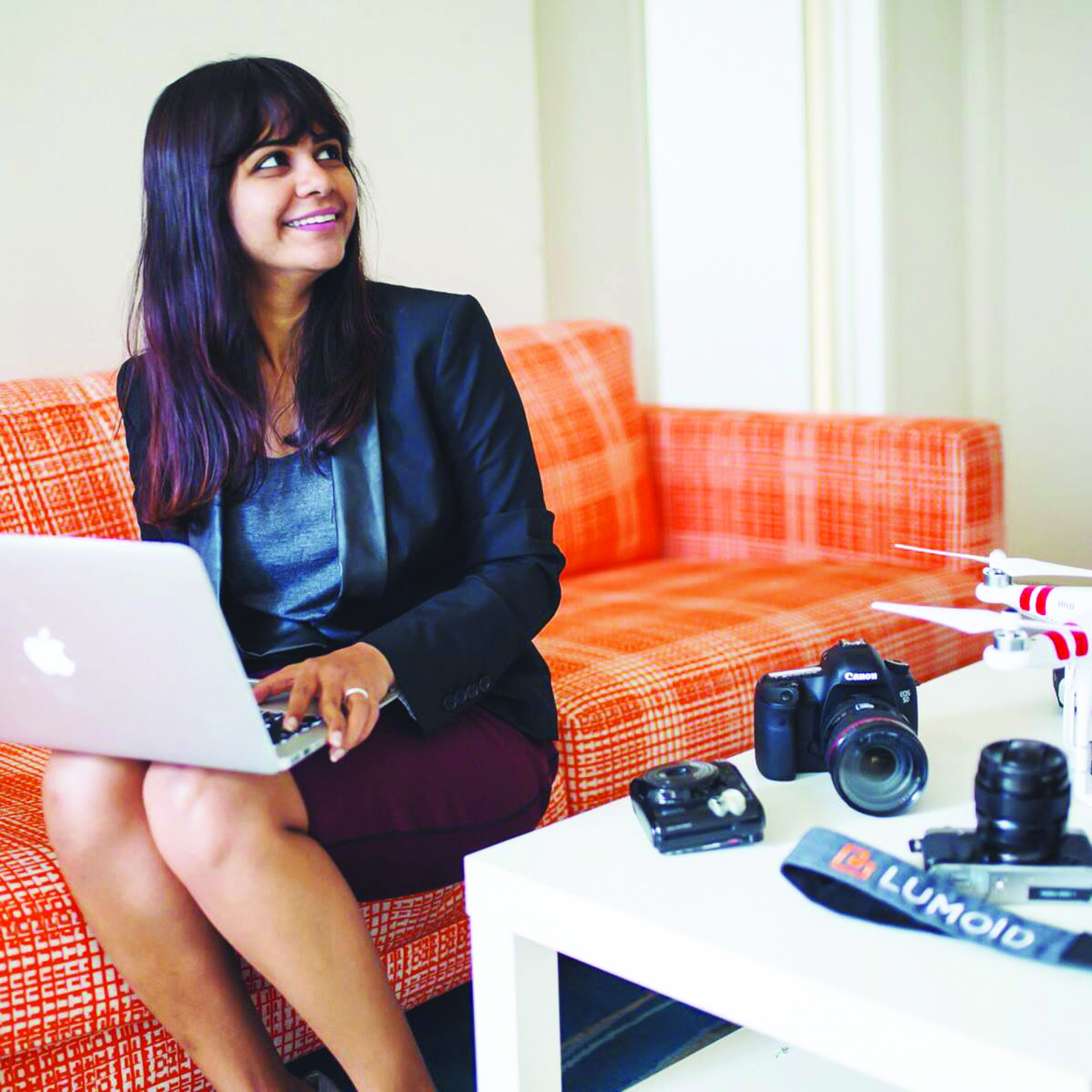
Aarthi Ramamurthy
Founder and CEO, Lumoid
What was the inspiration for the launch of Lumoid?
The idea for Lumoid brewed up when I worked at Netflix. My primary role there was to work with various consumer electronics companies to enable Netflix streaming on their devices. I realized that the consumer electronics market was booming, but the retail experience hadn’t really changed. So, in a way, working on Xbox and Netflix made me familiar with various electronics and how consumers adopted them, and that was tremendously helpful while starting Lumoid.
What was the "aha!" moment when you realized you might have a successful business?
A few months after we launched Lumoid, we started receiving handwritten thank-you cards and notes. I’d never seen anything like that before. We would get these really long letters from our customers thanking us for the service, and how it helped their business or their trip, etc. As a very small company back then, I think it was our first real sense of “Hmm, we *may* have something good here!”
What was the pivitol marketing campaign or channel that really catapulted the business in its early days?
When we started Lumoid, we didn’t really have a big budget for marketing campaigns. The one channel that really worked was referrals from existing customers. It took a while, but our initial customers told their friends and family about us and word started getting around. That, in combination with the initial launch press, really helped us.
How are you planning to scale your business for future growth?
We’ve set up a few partnerships along the way that are helping us scale the business. For example, we just partnered with several hotels, like the Ritz-Carlton Half Moon Bay, to provide a series of drone workshops for their guests.
Can you tell us about a successful initiative that was launched in the last year?
We recently partnered with Best Buy to provide a “try before you buy” service for the retailer’s customers. Best Buy is the largest consumer electronics retailer, and so far the initiative has been very successful.
What are your goals for the business going forward?
We want to expand geographically and open more Lumoid locations so that customers can easily pick up items from us. We want to scale our various partnership efforts. We also want to launch the next category of gadgets on our website. There’s a lot to accomplish!
What types of retail technology are you watching closely and/or thinking of implementing at KIDBOX?
Same-day delivery is something that we’d like to implement for our customers, since there’s high demand for “instant gratification.” We’re also looking at different ways to connect with the customer and be available for them when they need us — e.g., communicating with customers via live chat and instant messenger solutions.
Tell us about your hiring strategy.
We tend tend to hire people who can be described as generalists — i.e., willing to wear multiple hats and who tend to enjoy the challenge of working in a fast-moving startup.
Tell us about your leadership style.
My leadership style is constantly evolving; I don’t have a singular “style” yet. I tend to set a high performance bar for myself and everyone I work with, and that comes with its own merits and challenges. I’ve still yet to gain a lot of experience as a leader, and it’s been a continuous learning process on what’s working and what isn’t.
What can traditional retailers learn from your business?
That it’s possible to optimize for customer happiness and profitability at the same time. We started Lumoid to solve a very specific problem for our customers, and in the process we’ve been able to build a successful business. It’s easy to believe that delighting customers comes at a specific price, but that doesn’t have to be true in all cases.
What technology systems and service providers are in your technology stack?
We’ve custom built our website and back-end systems for inventory management and other functions. However, we rely on many services like Amazon Web Services and Stripe, as well as solutions like Zendesk and Olark, to interact with our customers.
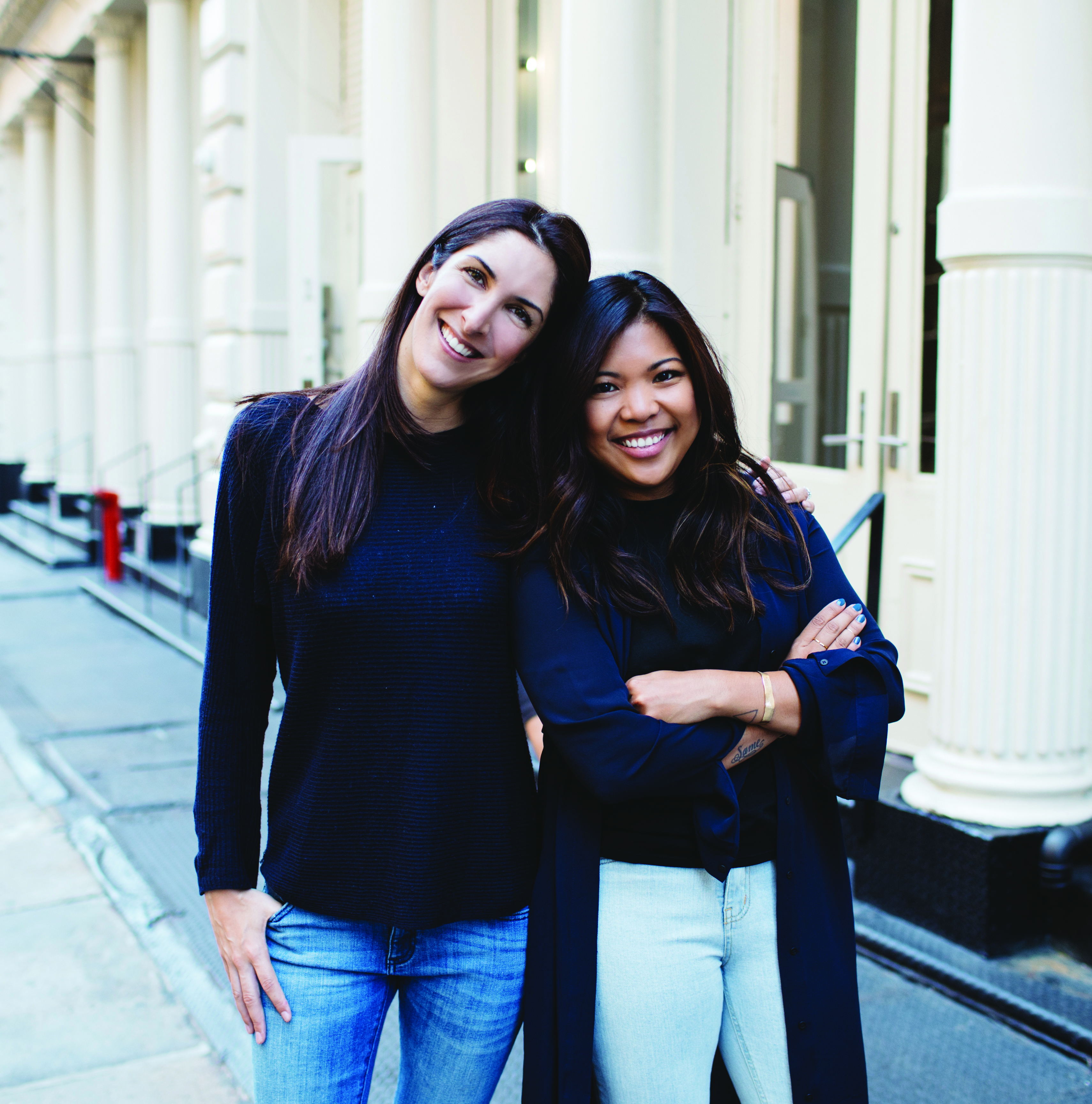
Stephanie Korey and Jen Rubio
Founders, Away
What was the inspiration for the launch of Away?
Jen Rubio: My old suitcase broke during a trip, and while looking for a replacement, I realized that everything on the market was either way too expensive, or affordable and bound to break after a few uses. On top of that, I couldn’t help wondering why there wasn’t a cool luggage brand that cared about the travel experience as much as I did. I connected with my friend and former co-worker, Steph, and a short phone call turned into an all-night planning session. She convinced me to move back to New York from London so we could start Away.
What was the "aha!" moment when you realized you might have a successful business?
JR: Truthfully, when we were researching the travel industry, we found that few people truly cared about the luggage they used from traditional brands. For most customers, it was more of a necessity than something they were proud to buy or own, or it was a gift they received for milestones like graduations and weddings. Before we started Away, there wasn’t another brand that resonated with how people live and travel today. We set out to be the brand that could get people as excited about their luggage as they were about the trips they were taking — and I feel like we’ve accomplished that.
What was the pivitol marketing campaign or channel that really catapulted the business in its early days?
JR: Instagram and social media have always been crucial tools for us. Even before our official launch, we offered our bags for pre-order, along with a book that we published called “The Places We Return To.” The book went viral on social media and sold out early. That was in late 2015, and were ’re still investing heavily in our social media presence and utilizing it to the fullest extent. There’s no better way to connect with your community.
How are you planning to scale your business for future growth?
JR: We’re building out our team and continuing to make big pushes to increase awareness in new markets. It's been an exciting year — over 100,000 suitcases sold in 15 months — but we still have a long way to go before everyone knows about Away.
Can you tell us about a successful initiative that was launched in the last year?
Stephanie Korey: We were blown away by the feedback to our first collaboration, a limited edition line with Pop & Suki. The bubblegum pink suitcases sold out in a couple of weeks and have been spotted on celebrities like Emily Ratajkowski, Jessica Alba, and Jenna Dewan, along with tons of customers all over the world. We’re still getting requests for it months later!
What are your goals for the business going forward?
JR: We want to become the top travel brand in the world and make travel seamless for everyone. Over the next few years, we’ll work towards that goal with new product launches, entry into new categories, opening brick-and-mortar retail locations at home and internationally, and by connecting with customers all over the world.
What types of retail technology are you watching closely and/or thinking of implementing?
JR: We keep an eye on all technology, not just retail-related things. We look at things we can implement immediately, like payment options and CRM solutions. In the longer term, we’re interested in things like how artificial intelligence will shape customer experience in retail (affecting things like recommendations, inventory management, consumer insights).
Tell us about your hiring strategy.
SK: Hire slow, fire fast. We’d rather have a few openings and take time to hire the right people than end up with someone who wasn’t a great fit for our team or their role.
Tell us about your leadership style.
SK: Jen and I have both found that giving our employees freedom allows them to do their best work.
What can traditional retailers learn from your business?
JR: Direct-to-consumer (DTC) really is the best model for customers. Aside from being able to offer higher quality products at a more affordable price by cutting out the middleman, our customer experience team is next level. They know our product better than anyone else, and they go above and beyond to make sure that each and every one of our customers is cared for. When we talk about the future of retail, I think that offering a best-in-class experience is something that customers are going to come to expect across the board, largely due to the incredible service Away and other DTC companies are able to provide.
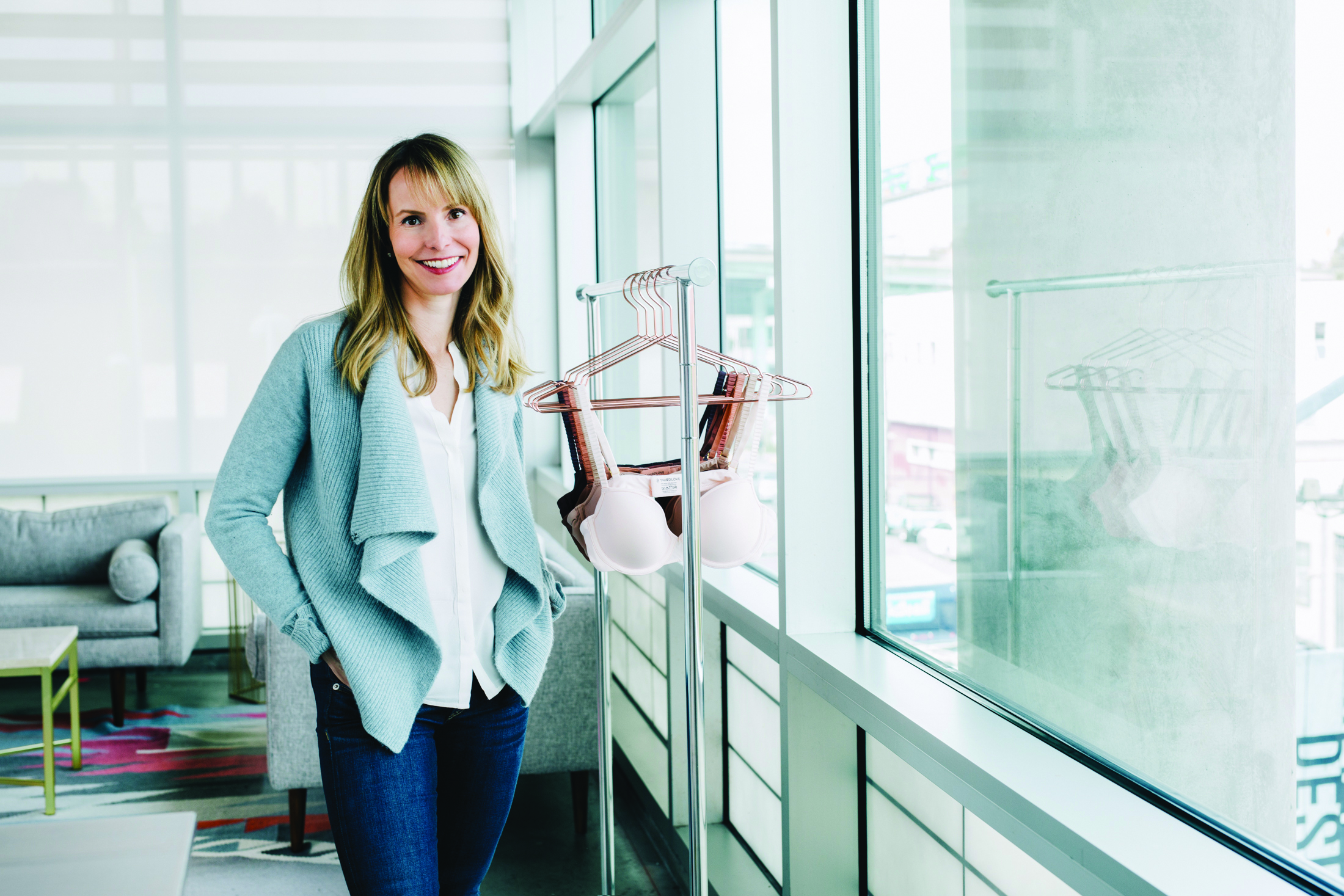
Heidi Zak
Founder, Thirdlove
What was the inspiration for the launch of Thirdlove?
I think similar to a lot of other women out there, I just really dreaded bra shopping. At the time I was at Google, I had to go to a party and I needed a new bra for the dress that I was wearing. I walked into a Victoria’s Secret store and the whole experience, leaving with something that wasn’t perfect for me but just accepting it was the best I was going to do led me to an idea: How can we create a better experience to buy a bra so you don’t have to go into the store, and how do you design a better product that really means something to the modern woman? That was really the genesis of ThirdLove.
What was the "aha!" moment when you realized you might have a successful business?
Earlier this year I was in Marco, Texas, where the population is under 2,000 people. I was getting a coffee and it was hot, and I was wearing a tank top and my ThirdLove bra strap was showing. As I was leaving the barista leaned over and said, “I know this is sort of random, but I see you have a ThirdLove bra on. I love my ThirdLove bra.”
Her name was Becky, and I started chatting with her about her life. I realized in that moment in time that our reach was so vast, because I marked this as the end of the world in the U.S. — we were in the middle of nowhere. The fact that she heard of us and wore our bras and it was impacting her life and making her more comfortable, I think that was really a moment for me realizing that we’re on to something big and a lot of women out there are wearing ThirdLove bras.
What was the pivitol marketing campaign or channel that really catapulted the business in its early days?
One of our biggest struggles at the beginning is we knew we had a really great product, but the question was if you have a really great brand that people haven’t heard of, how do you get them to try it? How do you get over that first purchase hurdle? So, we developed a program called “Try Before Buying” and it has been a huge part of our success. Through that program, we tell women if you pay $2.99 for shipping, we’ll send you a bra, and you can take the tags off the bra and really live in it for 30 days — make sure it’s going to be your new favorite bra. If you don’t love it, you can send it back no questions asked. We pay for return shipping. And if you love it, you pay for it. So really it’s a way to take the risk out of trying something new, and getting women to experience what it’s like to wear a high-quality bra that really fits.
How are you planning to scale your business for future growth?
We market in many different ways, but really for us it’s about expanding our reach and continuing to engage women who know our brand. An example of a channel we’re really focused on lately is radio. It’s a new way for us to reach out to customers and increase our audience.
Can you tell us about a successful initiative that was launched in the last year?
Earlier this year we launched a new line of nude shades, and we called the product line “The New Naked.” It was incredibly successful. We got a lot of customer feedback that our one shade of nude didn’t necessarily match their skin tone, and we like to really listen to our customers. Through customer feedback, focus groups and surveys, we developed an additional four shades of neutral colors. A goal of ThirdLove is to not just deliver the perfect fitting bra, but deliver the perfect fitting bra and the best shade for a woman’s skin tone. That’s been really exciting for us.
What are your goals for the business going forward?
We’re really excited to expand on both the category side as well as sizing. Soon we’ll be launching into plus sizing. Currently, we go through a double A to a G cup, and shortly we’ll actually be running through a K cup. Again, this goes back to, “How do we help every woman find her best-fitting bra?”The second is what we’re launching on the category side. We’ll be launching nursing and maternity, and that’s also really exciting for us because we want to be a place a woman can come to find a bra that’s right for her at every moment in her life. Whether that’s when she’s pregnant or while she’s nursing, having that type of product for her as well is really important to us.
What types of retail technology are you watching closely and/or thinking of implementing?
We will be launching 360-degree product videos soon. With a bra in particular, it’s very hard, even if your showing a flat lay photograph or a bra on a model, to show every aspect of the bra that makes it really unique. Whether that’s the straps, cup, hook and eye, etc. So we’ll be testing 360-degree videos and a rotation of the product so shoppers can see all of the details. Something else that we’re excited about right now is chatbots, and leveraging the conversations you have with a customer at multiple points. I think the technology is still in its early days, but it's a very interesting technology nonetheless.
Tell us about your hiring strategy.
SK: Hire slow, fire fast. We’d rather have a few openings and take time to hire the right people than end up with someone who wasn’t a great fit for our team or their role.
Tell us about your leadership style.
I think leadership is really about setting strategy. We’re consistently talking about our goals at every company update meeting we have, and also communicating openly with the team. I send a weekly update email that highlights what all of the different teams are doing and different successes, and I think that’s really important. I also think encouraging failure is very valuable — that’s another part of our company values.
Going back to our company values, it’s really all about being adaptive and really curious, and with that is going to come failure. We try to make sure everyone knows it’s OK to fail. It’s not OK to fail doing the same thing and making the same mistake over and over again, but it’s absolutely OK to do something that you fail at but can learn from. I think those are two really important messages that empower the team to be successful in everything they do.
What can traditional retailers learn from your business?
The core thing we do day in and day out that has made us successful is focus on delivering value to the customer and thinking about what she needs and wants. It’s not about me, it’s not about us, it’s about ThirdLove’s customers and how do we create a better experience for her buying a bra.
Everyone on our team, that’s all they think about. Whether they’re developing the online experience, interfacing with our customers directly through customer service, or creating email content for social or marketing, all of it goes back to what does our customer want and how can we make her life better. I think, inherently, if that’s what you’re doing as a company, you’ll be successful because you’re creating value. It’s not necessarily about cutting costs or the bottom line, it’s about the experience — and with experience comes profit and revenue.





